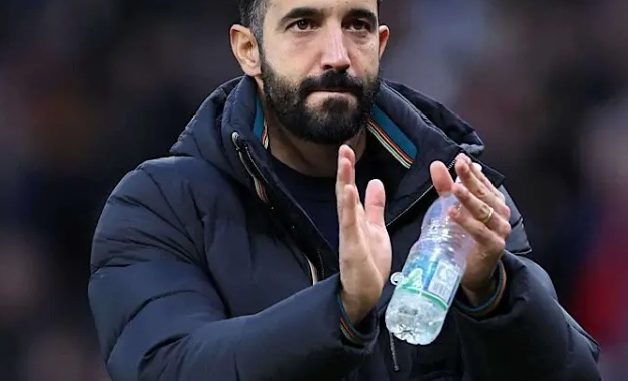
“Man Utd unveil new squad number ahead of next season”, covering the latest changes ahead of 2025–26:
Man Utd unveil new squad number ahead of next season
As Manchester United gear up for the 2025–26 Premier League campaign, the club have confirmed several fresh squad number assignments—combining iconic first-team reallocations and milestones for emerging young talent.
🔢 Diogo Dalot inherits the iconic No. 2 shirt
The headline change sees Portuguese full-back Diogo Dalot take over the No. 2 shirt, a number steeped in United history. Dalot swaps his long-held No. 20, first worn upon joining United in 2018, for the storied jersey vacated by Victor Lindelöf after his summer departure.
That number has deep roots at Old Trafford: long-time club and England legend Gary Neville donned it from 1994 to 2011, making over 600 appearances and winning eight Premier League titles, two Champions Leagues, and multiple domestic cups. Former United manager Jose Mourinho once predicted Dalot could follow Neville’s footsteps—remarking in 2018 that Dalot’s age and trajectory mirrored Neville’s early rise. Now, sporting the No. 2 shirt, Dalot has the symbolic opportunity to embrace that comparison.
Branding wisdom: Cunha takes the famous No. 10 jersey
Meanwhile, Matheus Cunha, United’s high-profile summer signing from Wolves, has been officially assigned the No. 10 shirt—formerly worn by club icon Marcus Rashford.
The No. 10 shirt carries considerable weight at Old Trafford—iconic figures like Wayne Rooney, David Beckham and Ruud van Nistelrooy once wore it. Cunha’s acquisition of it has been interpreted as a clear signal about the club’s trajectory and Rashford’s waning role at United. Indeed, Rashford is reportedly one of five senior players currently seeking transfers this summer.
Young academy talents move up the ranks
In parallel with first-team reassignments, United have handed new numbers to their academy graduates—an intentional step in showing increased trust and visibility for those pushing into the senior squad:
Tyler Fredricson, a promising 20-year-old centre-back, moves from No. 55 to No. 33 after making senior appearances in the final weeks of 2024–25.
Chido Obi, 17, who arrived from Arsenal’s academy in 2024, has been promoted from No. 56 to No. 32, reflecting his rapid adaptation.
Shea Lacey advances from No. 72 to No. 61, Bendito Mantato from No. 85 to No. 70, and Reece Munro shifts from No. 79 to No. 65. All three are now in first-team training and expected to feature on the pre-season tour.
Collectively, these changes underscore manager Ruben Amorim’s emphasis on youth integration and a long-term rebuild strategy.
Wider transfer context and reshaped squad
The jersey echoes wider squad transformation: this summer United have spent nearly £150 million in acquisitions like Cunha and Bryan Mbeumo, while they target further reinforcements—such as Javi Guerra from Valencia to support midfield—with planned exits including Rashford, Jadon Sancho, Antony, and others.
Other notable roster moves include signing Patrick Dorgu, who joined from Lecce and inherited the No. 13 shirt, joining a lineage that features midfield legend Ji‑Sung Park. Young defender Leny Yoro retains No. 15, the same number he wore at Lille and once worn by club stalwart Nemanja Vidić.
Even goalkeeper numbers are shifting in earlier seasons (e.g. Onana taking No. 24 in 2023–24 due to personal significance), though for 2025 there’s no further change yet publicized beyond transfers and academy promotions.
Tactical symbolism and messaging
Assigning Dalot No. 2 not only fills a key defensive role, but also aligns with the club’s narrative—it shows continuity, identity and belief in internal progression. Cunha’s No. 10 reflects ambition and modern reshaping in attack. Promoting academy players via meaningful squad numbers underlines commitment to development under Amorim.
These number changes coincide with United’s new tactical direction: Amorim is deploying a 3‑4‑2‑1 formation, which relies heavily on attacking width and dynamic wing-backs. Cunha and Mbeumo are set to function as advanced No. 10s behind Rasmus Højlund, who remains United’s centre-forward even though no additional high-profile #9 signing is expected unless departures occur.
What fans should watch next
Dalot’s season wearing No. 2 will draw scrutiny—will he replicate Neville’s reliability and longevity?
Cunha’s adaptation as No. 10 will define United’s attacking creativity and signal whether Rashford’s era is truly over.
Will academy graduates Shea Lacey, Mantato, Munro, Obi or Fredricson earn playing time or become part of the main squad?
The reassignments for 2025–26 ultimately serve as symbolic — and strategic — guideposts for United’s evolving identity this summer.
—
Summary of key changes
Player Shirt Number 2025–26 Significance
Diogo Dalot 2 Echoes Gary Neville, wide expectations in defence
Matheus Cunha 10 Iconic number, shifting from Rashford’s era
Tyler Fredricson 33 Promotion reflecting senior debut and potential
Chido Obi 32 Step up into squad from Arsenal youth
Shea Lacey 61 Academy talent entering first-team training
Bendito Mantato 70 Emerging winger wing-back included in pre-season camp
Reece Munro 65 Young centre-back moving closer to first-team exposure
—
Manchester United’s official unveiling of these squad numbers tells a wider story: a club in transition, blending heritage and youth, ambition and evolution. With Dalot wearing the No. 2 shirt and Cunha stepping into No. 10, the Red Devils signal intent for stability and attacking flair. Meanwhile, jumping the ranks are academy prospects ready to join the rebuild under Amorim’s direction. Fans will be watching closely as shirt identity meets on-field performance in the important summer headlined by these decisions.

Leave a Reply